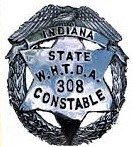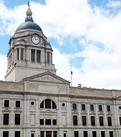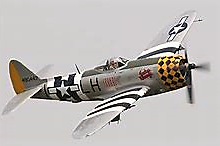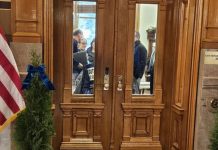
1856   The LaGrange County Rangers had their first meeting. The group was formed for the “detection and apprehension of horse thieves and other nefarious operators.” The Indiana General Assembly had passed an act in 1852 which allowed citizens to create their own law enforcement agencies. Other similar groups included the Noble County Invicibles, the Angola Regulators, and the Jackson County Horsethief Detecting Society.
|

1902   The new Allen County Courthouse was dedicated in Fort Wayne. Construction on the building, designed by Brentwood S. Tolan, had begun in 1897. Built at a cost of $817,000, it is considered one of the finest examples in the nation of Beaux Arts architecture. It has been designated a National Historic Landmark.
|
 1937   The Mark Twain Roustabout Club of Indianapolis embarked on their annual river steamboat trip. The group, made up of business and professional members of the community, began their journey on the Ohio River at Cincinnati and traveled to West Point, Kentucky. Invited to join them on the riverboat S. S. Gordon C. Greene were Indiana Governor M. Clifford Townsend and Senator Frederick Van Nuys,. 1937   The Mark Twain Roustabout Club of Indianapolis embarked on their annual river steamboat trip. The group, made up of business and professional members of the community, began their journey on the Ohio River at Cincinnati and traveled to West Point, Kentucky. Invited to join them on the riverboat S. S. Gordon C. Greene were Indiana Governor M. Clifford Townsend and Senator Frederick Van Nuys,. |
 1948   The Four Freshmen singing group made their debut at the 113 Club in Fort Wayne. The quartet, which began at the Jordan School of Music at Butler University, was made up of brothers Don and Ross Barbour, their cousin Bob Flanigin, and friend Hal Kratzsch. They created a vocal jazz harmony that won them a contract with Capitol Records. The group’s big hits include “It’s a Blue World,” “Mood Indigo,” and “Day by Day.” 1948   The Four Freshmen singing group made their debut at the 113 Club in Fort Wayne. The quartet, which began at the Jordan School of Music at Butler University, was made up of brothers Don and Ross Barbour, their cousin Bob Flanigin, and friend Hal Kratzsch. They created a vocal jazz harmony that won them a contract with Capitol Records. The group’s big hits include “It’s a Blue World,” “Mood Indigo,” and “Day by Day.” |
 1942   The first P-47 Thunderbolt fighter plane was produced by the Republic Aviation Company in Evansville. Equipped with eight 50-caliber machine guns, the P-47 was one of the most important planes used by the United States Air Force in World War II. By the time the war was over in 1945, over 6,000 Thunderbolts had been built in Evansville. 1942   The first P-47 Thunderbolt fighter plane was produced by the Republic Aviation Company in Evansville. Equipped with eight 50-caliber machine guns, the P-47 was one of the most important planes used by the United States Air Force in World War II. By the time the war was over in 1945, over 6,000 Thunderbolts had been built in Evansville. |

50 YEARS AGO
1971   The Indiana Supreme Court ruled unconstitutional a state law some called “a license to steal.”  Public Law 155, passed by the 1971 General Assembly, allowed convicted persons to be given credit for all prison time prior to trial. Critics claimed that habitual criminals with extensive past jail time would be exempt from punishment for future offenses. Chief Justice Norman F. Arterburn had copies of the Supreme Court ruling sent to every judge in the state.
|
Follow this link to subscribe to Hoosier History Highlights and to view archived editions
Follow us on Instagram: @instatehousetouroffice
|





 1937   The Mark Twain Roustabout Club of Indianapolis embarked on their annual river steamboat trip. The group, made up of business and professional members of the community, began their journey on the Ohio River at Cincinnati and traveled to West Point, Kentucky. Invited to join them on the riverboat S. S. Gordon C. Greene were Indiana Governor M. Clifford Townsend and Senator Frederick Van Nuys,.
1937   The Mark Twain Roustabout Club of Indianapolis embarked on their annual river steamboat trip. The group, made up of business and professional members of the community, began their journey on the Ohio River at Cincinnati and traveled to West Point, Kentucky. Invited to join them on the riverboat S. S. Gordon C. Greene were Indiana Governor M. Clifford Townsend and Senator Frederick Van Nuys,. 1948   The Four Freshmen singing group made their debut at the 113 Club in Fort Wayne. The quartet, which began at the Jordan School of Music at Butler University, was made up of brothers Don and Ross Barbour, their cousin Bob Flanigin, and friend Hal Kratzsch. They created a vocal jazz harmony that won them a contract with Capitol Records. The group’s big hits include “It’s a Blue World,” “Mood Indigo,” and “Day by Day.”
1948   The Four Freshmen singing group made their debut at the 113 Club in Fort Wayne. The quartet, which began at the Jordan School of Music at Butler University, was made up of brothers Don and Ross Barbour, their cousin Bob Flanigin, and friend Hal Kratzsch. They created a vocal jazz harmony that won them a contract with Capitol Records. The group’s big hits include “It’s a Blue World,” “Mood Indigo,” and “Day by Day.” 1942   The first P-47 Thunderbolt fighter plane was produced by the Republic Aviation Company in Evansville. Equipped with eight 50-caliber machine guns, the P-47 was one of the most important planes used by the United States Air Force in World War II. By the time the war was over in 1945, over 6,000 Thunderbolts had been built in Evansville.
1942   The first P-47 Thunderbolt fighter plane was produced by the Republic Aviation Company in Evansville. Equipped with eight 50-caliber machine guns, the P-47 was one of the most important planes used by the United States Air Force in World War II. By the time the war was over in 1945, over 6,000 Thunderbolts had been built in Evansville.




